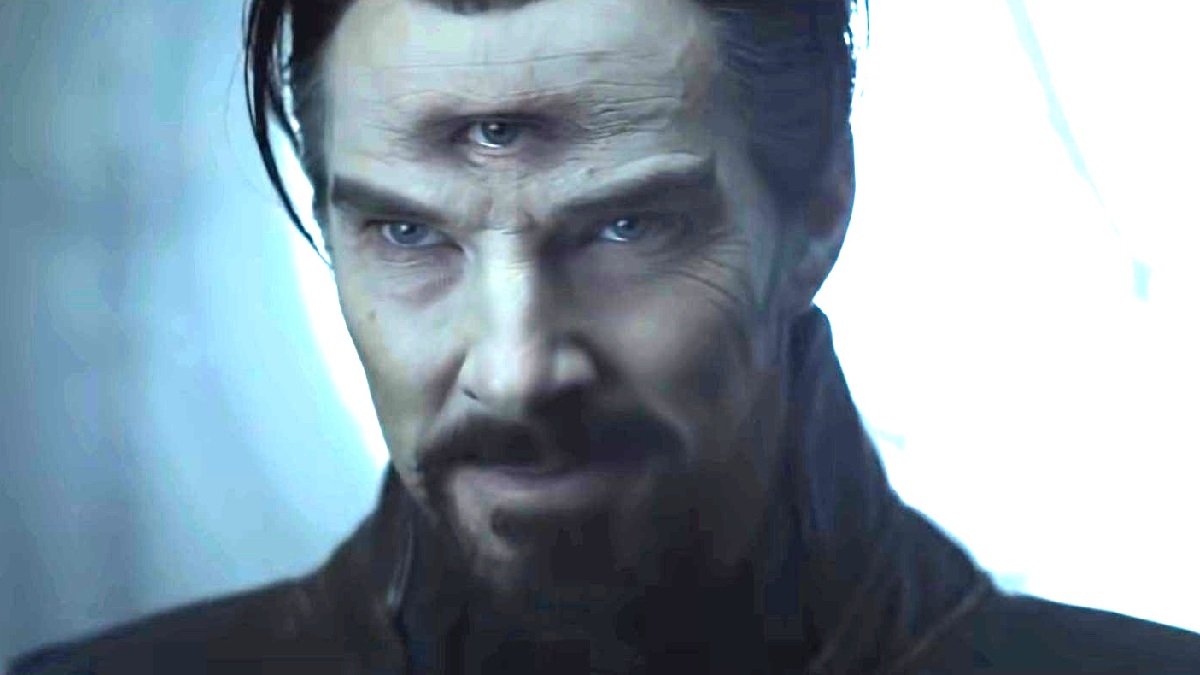Warning: the article contains spoilers for Doctor Strange in the Multiverse of Madness.
Fans are torn about the quality of the computer-generated imagery of a certain revelatory scene in Doctor Strange in the Multiverse of Madness.
In terms of director Sam Raimi’s own history with helming films that feature special effects, he’s had his ups and downs throughout the years, particularly with his acclaimed Evil Dead trilogy. Warning: spoilers to follow for Doctor Strange in the Multiverse of Madness.
The scene in question happens at the very end of the film, when it is revealed that Benedict Cumberbatch’s Doctor Stephen Strange has formed a third eye on his forehead, apparently as a result of dabbling with the evil book known as the Darkhold so much through the course of the film.
As one Twitter user put it, “that third eye is one of the worst cgi’s i’ve ever seen.”
It’s truly up for debate if the effect is indeed terrible, as you could argue it resembles having something of a 2D quality, as if crafted as a texture in After Effects, rather than being a truly 3D asset. On the other hand, it’s totally possible that perception is merely a result of an eye appearing on someone’s forehead being rather uncanny and other-worldly, making us think it looks “unreal” simply by the virtue of such a thing not existing in the real world.
Fans had a lot to say about the subject as the tweet garnered hundreds of thousands of likes and tens of thousands of retweets.
One Twitter user refused to believe it was real — not the third eye, but the screenshot itself.
Another fan claimed the CGI in the latest Marvel films appeared to be subpar, even when compared to the latest Disney Plus original series offerings.
“Someone had to say it,” proclaimed another user.
A series of crying laughing emojis was all that one fan could muster.
Another fan compared the effect to a not-so-high-brow kung fu movie spoof.
Did the same artist make “Annoying Orange,” by any chance?
Perhaps it’s the lack of an eyebrow that is the real problem. But then, would he have to hand a second forehead, too?
On the other hand, another user defended the look, saying it was intentionally made to look disjointed, along the lines of our previously mentioned “uncanny” theory.
Another fan proclaimed, “it has that raimi SOUL though.”
“It’s somehow good though,” was one fan’s decidedly dissenting opinion.
One Twitter user apparently had enough of the backlash, saying it was disproportionate compared to the overall quality of the movie itself.
In terms of Raimi’s history with special effects prior to Multiverse of Madness, he was considered something of a whiz when it came to directing films in a largely pre-CGI world, though not all those examples hold up to this day. The stop-motion corpse disintegration at the climax of his 1981 classic, The Evil Dead, worked surprisingly well for a film with such a shoe-string budget. The follow-up film, 1987’s Evil Dead II, fared even better, as it featured an impressively-realized portal in space-time sucking everything into it, and Bruce Campbell’s Ash Williams putting his hand through a liquid mirror, two hat tricks used once again in the Doctor Strange sequel. However, some of the Deadite skeleton puppeteering and green screen effects in Raimi’s third undead film, 1992’s Army of Darkness, do not hold up nearly as well.
Check out Doctor Strange in the Multiverse of Madness in theaters now, and decide for yourself.

